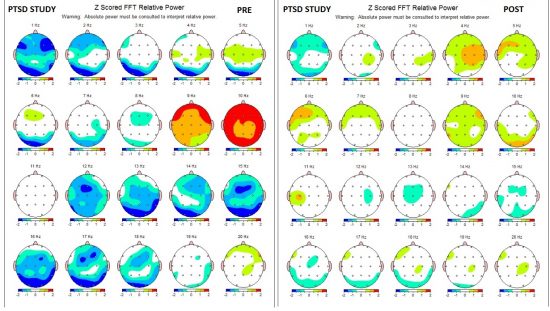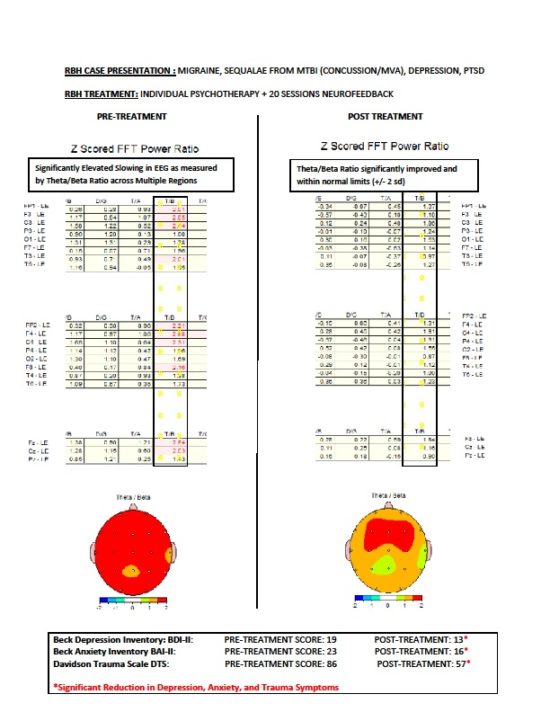Clinical Research Studies
 RBH Clinical Research Studies
RBH Clinical Research Studies
RBH conducts regular Clinical Research Studies on the efficacy of our combined therapeutic and neurofeedback interventions. RBH’s Clinical Director, Dr. Melinda Down, oversees the Clinical Research Studies.
Recent studies have evaluated the efficacy of RBH treatment inverventions for cases Depression, Autism, PTSD, and TBI.
Many patients presenting with depression, anxiety, chronic pain, and ADHD have also participated in pre-post case studies which have revealed improved neuropsychological, emotional, and behavioral functioning. Some patients have enjoyed an increase in attentional function while others have pre-post improvements in IQ or memory function. Many parent reports of improved behavioral self-regulation emerge from this pre-post analysis of treatment gains.
Participation in a RBH Clinical Research Study is contingent upon a comprehensive neuropsychological assessment confirming the clinical diagnosis and requires a high level of treatment commitment from the active participants.
Pre-post analyses include neuropsychological and neurophysiological functioning to evaluate changes found in brain function following intensive cognitive behavioral therapy and neurofeedback. Many of our patients have enjoyed significant reduction in presenting symptoms and dramatic improvement in overall functioning.
RBH is committed to providing ongoing Clinical Research Studies to continue to evaluate optimal treatment combinations to encourage maximum treatment benefit. The QEEG allows for a specific analysis of neurobiological aspects of brain function that are contributing to presenting symptoms and functional difficulties.
By addressing both the psychosocial, cognitive, and behavioral issues as well as providing support for optimizing individual brain function, we are able to help patients achieve their treatment goals in a more timely fashion.
Neurofeedback results in powerful changes in the brain. As the brain reorganizes toward a more efficient pattern of neurophysiological activity, neurocognitive and emotional functioning can improve dramatically. We often see these neuronal improvements via Pre-Post QEEG comparisons as depicted in the diagram below detailing significant improvements in coherence, or functional connectivity, in the right Temporoparietal Region.
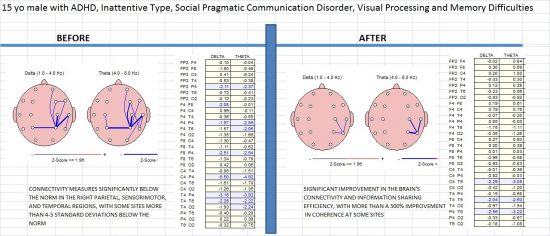
Another example of changes in brain function resulting from Neurofeedback can be seen in the case below of a 7 yo male with Autism and ADHD whose brain function was marked by excessive slow wave activity bilaterally across the frontal lobes. Notice the significant improvement in the Alpha/Beta Power Ratio bilaterally across the Frontal and Pre-Frontal cortex region following treatment with Neurofeedback.
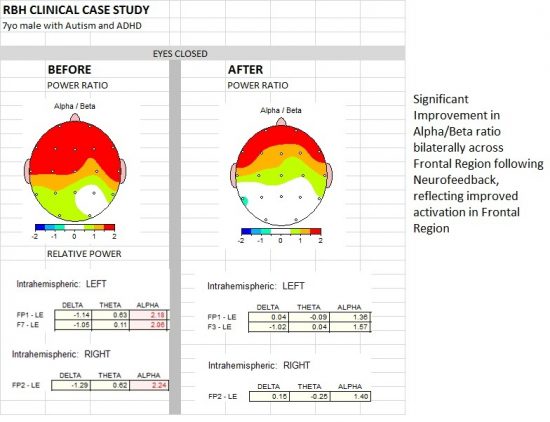
This patient’s brain function was also markedly improved by reducing the excess slow wave activity in the 3 HZ band across Parietal, Temporal, and Occipital Regions Bilaterally. These changes have resulted in improved memory, information processing, attention, and executive functioning.
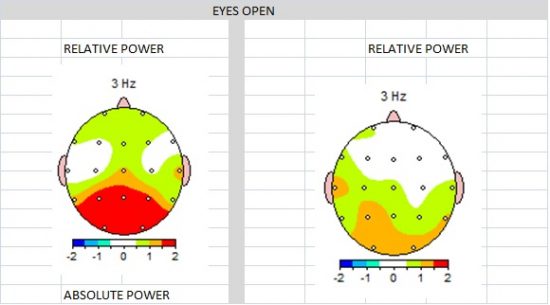
 Homecoming for Veterans
Homecoming for Veterans
We celebrate another case of significant changes in brain function from neurofeedback! These changes were associated in dramatic reduction in symptoms of Depression, Anxiety, and PTSD!
